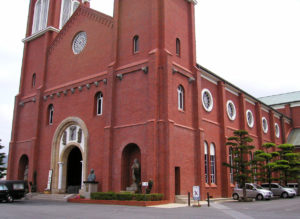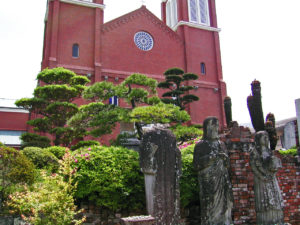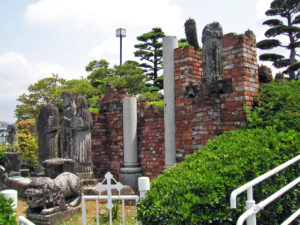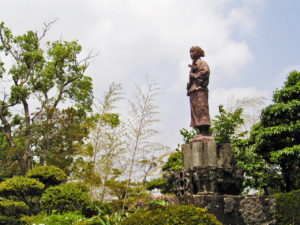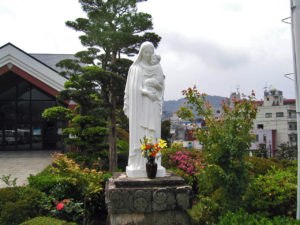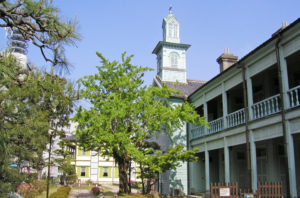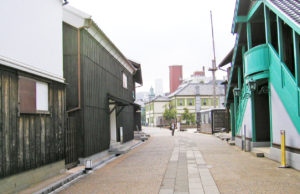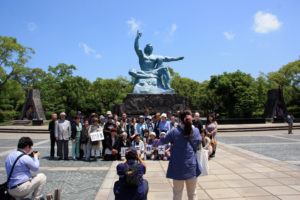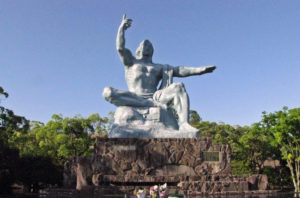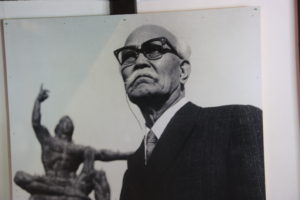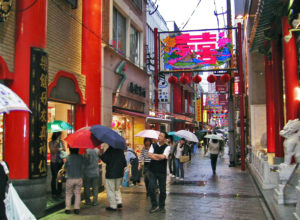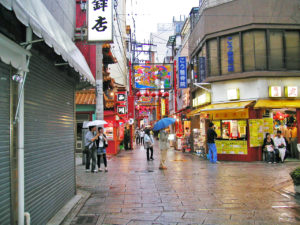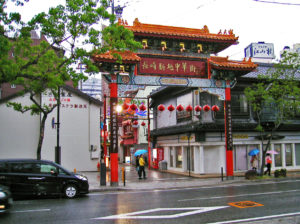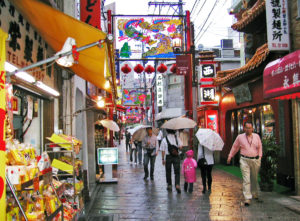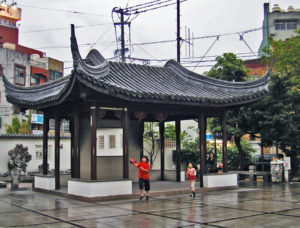Urakami Cathedral
This Tourist information is created by Japan KYUSHU Tourist for your journey.
When you have an idea or a plan for traveling in Kyushu, Japan, please contact us
by sending an Enquiry. Make an Enquiry
Construction of the original Urakami Cathedral, a brick Romanesque building, began in 1895,
after a long-standing ban on Christianity was lifted.
When completed in 1914, it was the largest Catholic church in East Asia.
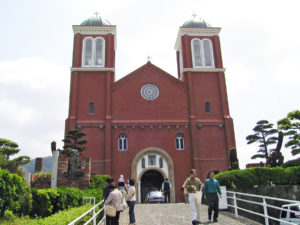 |
|
|
The Atomic bomb dropped on August 9, 1945 explored in Urakami, only 500m from the cathedral,
which was completely destroyed.
What remained of the cathedral is now on display in the Atomic Bomb Museum.
A replacement was built in 1959, and remodeled to more closely resemble the original in 1980.
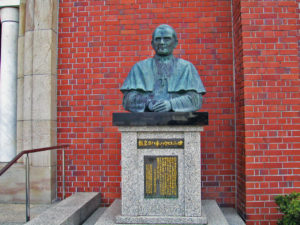 |
|
|
The nearby the Ground Zero in Peace Park contains remnants of the Ruins of Urakami Cathedral
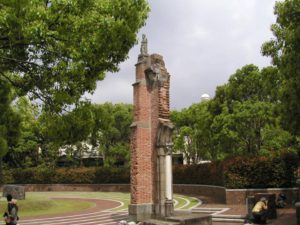 |
|
|
General information
| Address | 1-79 Moto-machi, Nagasaki-city |
| Access |
8 minutes walk from Heiwa koen Tram Station |
| Open hours |
9:00 to 17:00 |
| Admission fee | No fee is required, please donate to the donation box |
| Days closed | No closing days |
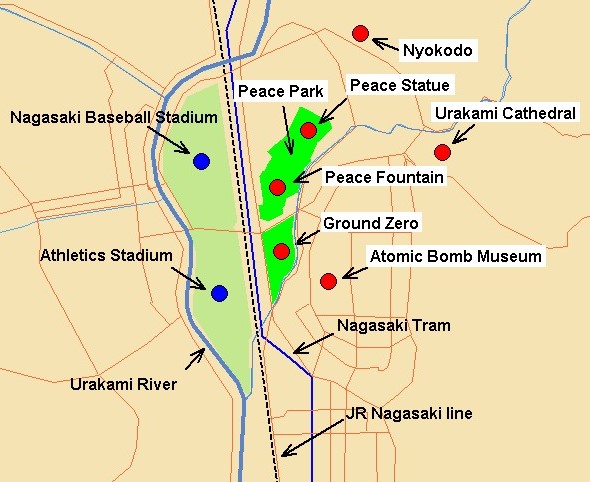
The 26 Martyrs Museum
This Tourist information is created by Japan KYUSHU Tourist for your journey.
When you have an idea or a plan for traveling in Kyushu, Japan, please contact us
by sending an Enquiry. Make an Enquiry
The 26 Martyrs Museum is dedicated to the 26 Christians who were executed here on
February 5, 1597. They included both foreign missionaries and Japanese laymen. Missionary
activities were prohibited at the time, and Japan’s ruler Toyotomi Hideyoshi staged the execution
as a warning. The monument is located in a small park on a hill not far from Nagasaki Station
and offers nice views over the city.
A straight red line runs from the Monument across the park’s plaza in the direction of the Oura
Cathedral on the opposite side of the city. Oura Cathedral is also dedicated to the 26 martyrs.
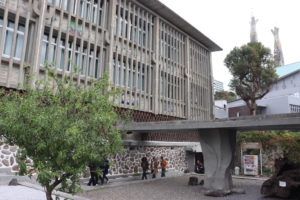 |
 |
 |
The museum behind the monument is devoted to the memory of the martyrs and to Christianity in
Japan in general. Its interior is reminiscent of a church with stained-glass windows, making for
atmospheric viewing of the exhibits. On display are artifacts related to Christianity in Japan,
including old documents, statues and jewelry.
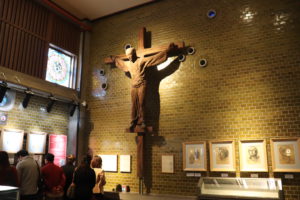 |
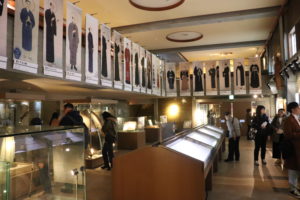 |
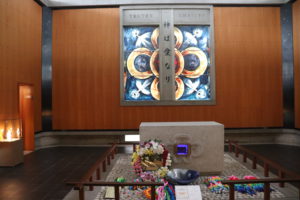 |
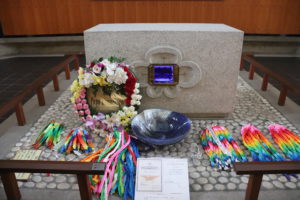 |
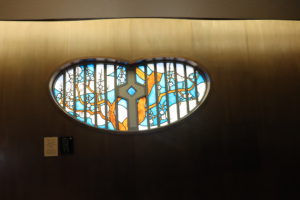 |
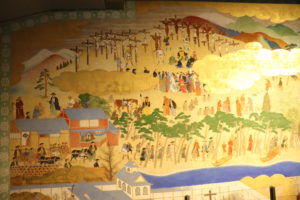 |
General information
| Address | 7-8 Nishizaka-cho, Nagasaki-city |
| Access | 5 minuts walk from JR Nagasaki Station |

Mount Inasa
This Tourist information is created by Japan KYUSHU Tourist for your journey.
When you have an idea or a plan for traveling in Kyushu, Japan, please contact us
by sending an Enquiry. Make an Enquiry
Mount Inasa is one of the best view spot in Nagasaki. A 333 meter high mountain in close
distance to JR Nagasaki Station. The summit can be reached by ropeway or car and offers
great views over the city. And also, the magnificent night views from Mount Inasa is chosen
the three Major Night View in Japan along with Kitakyushu-city and Sapporo,
and the three Major Night View in the World along with Hong Kong and Monaco.
 |
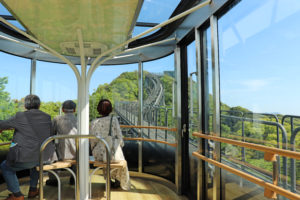 |
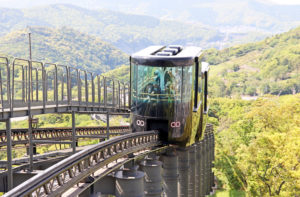 |
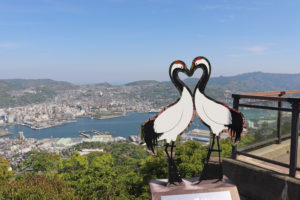 |
 |
 |
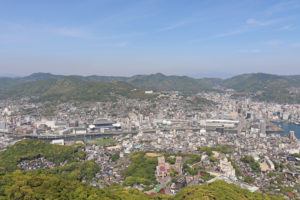 |
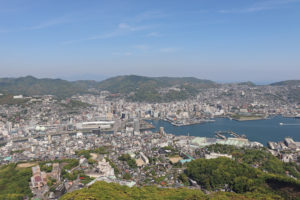 |
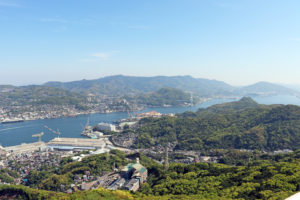 |
The three Major Night View in the World
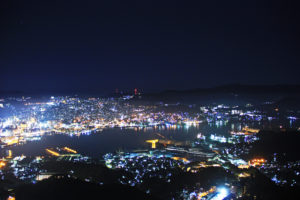 |
 |
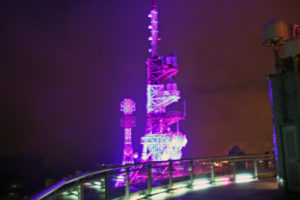 |
General information
Access
・20 minutes by car from JR Nagasaki station
・By Nagasaki bus and ropeway
10 minutes from JR Nagasaki station to Fuchi-jinjya Ropeway station
5 minutes from Fuchi-jinjya to sancho Ropeway station
・Inasayama Night View bus tour is available from Hotels in Nagasaki-city
by Nagasaki Yuran Bus
Nagasaki

Seishin girls’ School
Japan’s first Catholic girls’ school opened in 1891. It was relocated to a site built
in 1898. The building has now been renovated and is now Hotel Indigo Nagasaki.
The red brick structure and arched window frames remain intact, creating a nostalgic
Romanesque atmosphere.
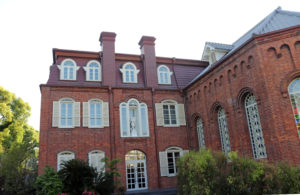 |
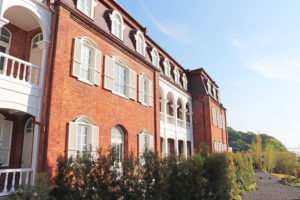 |
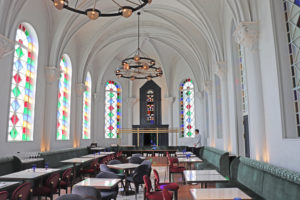 |
St. Andrew Chistian Seminary
St. Andrew Christian Seminary building stands on the eastern end of Dejima
and features a light blue exterior and a tower with a cross.
It is the oldest surviving Protestant Seminary building in Japan.
It was built as a church school in 1878 and opened the following year as the Dejima
Shinbashiguchi English and Japanese School.
It later changed its name to Dejima Shinbashiguchi Anglican Seminary and offered
theological education. After closing in 1886, it was used as accommodation for foreign
missionaries.
|
|
|
|

Tram in Nagasaki
The Nagasaki Electric Tramway provides a convenient and affordable way to travel around
the main attractions of Nagasaki-city.
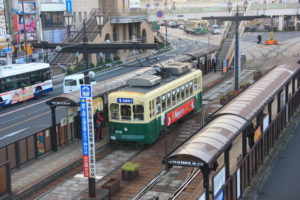 |
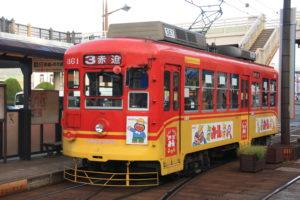 |
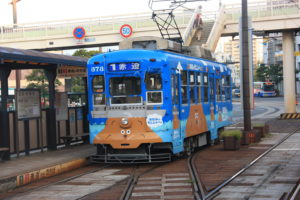 |
No matter how far you travel, the adult fare for a single journey is always 130 yen.
A one-day pass offering unlimited rides for 500 yen is also available for purchase at major
information centers, hotels, and through a smartphone app (but not on board the trams).
Announcements and signs both on trams and at the stops are available in English, making
it easy to find which tram you need to take and where to get off.
Tram Route
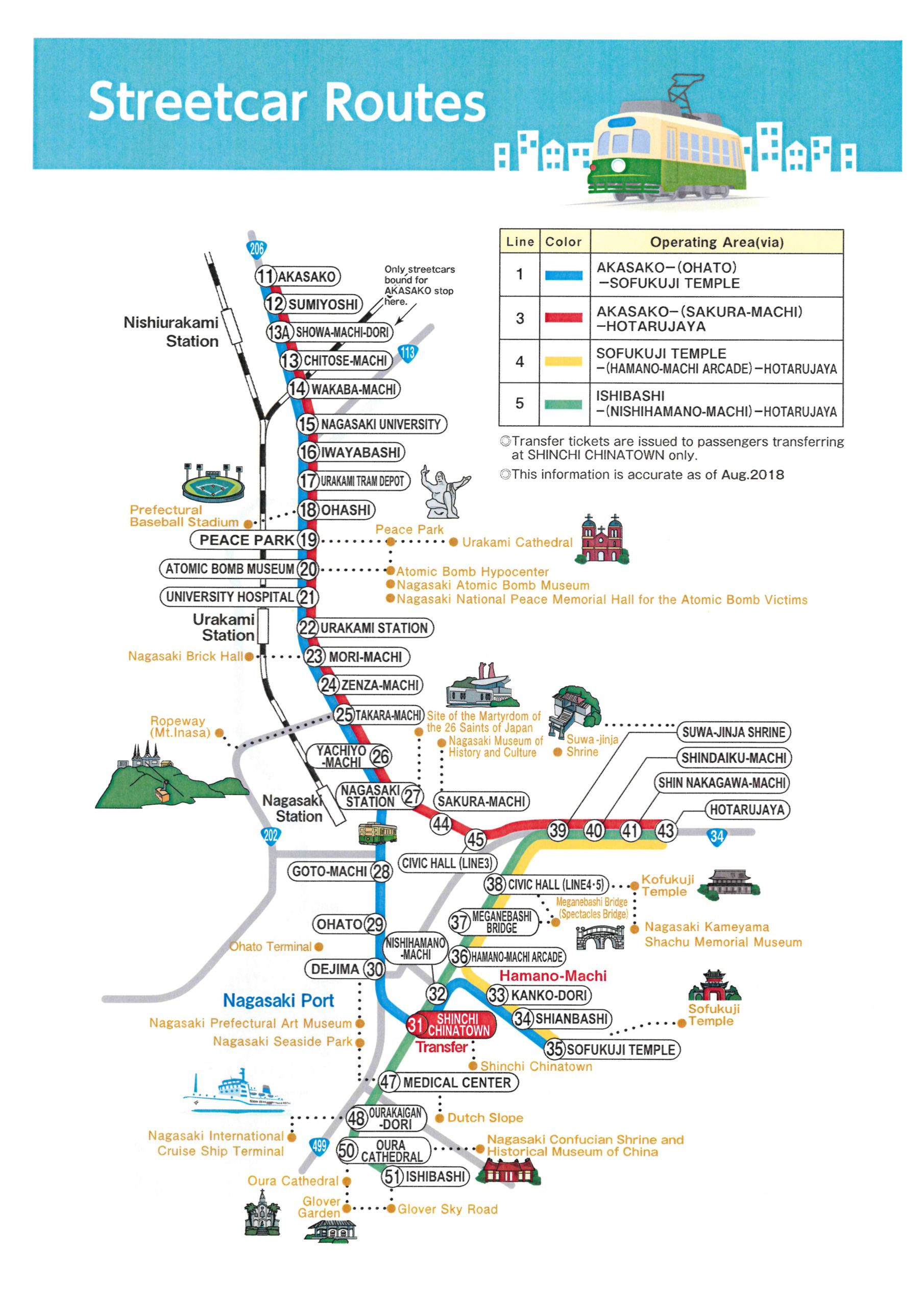
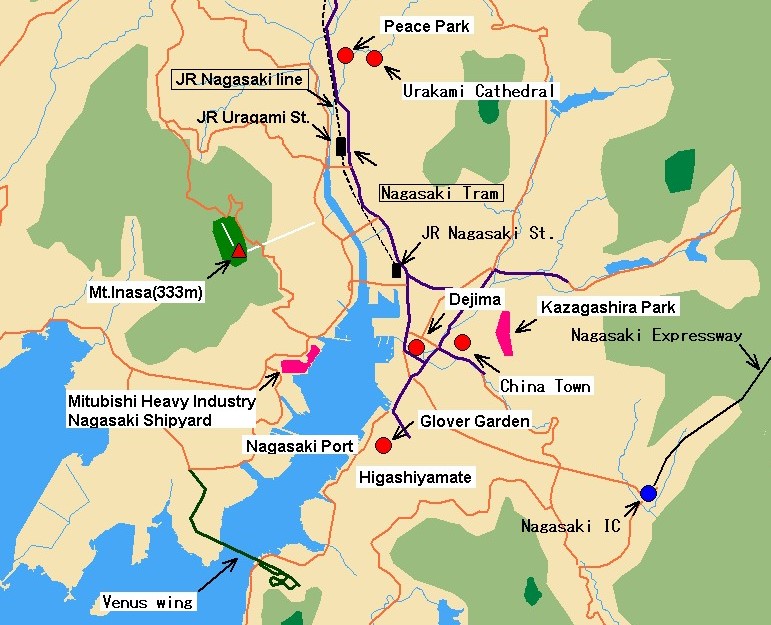
Home Tailor-made tours Study tours Christian Pilgrimage tours Golf tour Kyushu tour packages
Peace Statue
World Peace from Nagasaki. The Peace Statue was completed in 1955, ten years after the
atomic bombing. The 9.7 meter high statue sitting on a 4 meter tall pedestal, made by renown
sculptor Kitamura Seibo who born in Minami-Shimabara-city, Nagasaki-prefecture in 1884.
The bronze Peace Statue has one left arm extending horizontally and other right arm pointing
to the sky. The left arm stretching to the horizon symbolizes world peace, and the other right
pointing skyward indicates the threat of atomic destruction (the harm of nuclear power).
The closed eyes show the prayer for the peaceful repose of the victims of the Atomic Bomb.
|
Visiting from all over Japan and the World |
Wishing for eternal world peace from Nagasaki |
Kitamura Seibo, the Statue was completed at the age of 71 |
Peace Memorial Ceremony is held in front of the statue on August 9 every year and
the Mayor of Nagasaki makes the “Nagasaki peace declaration” for the whole world.
Commitment to World Peace from all over the World
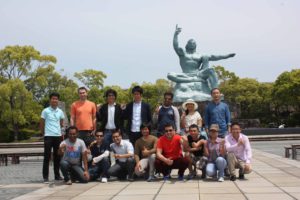 |
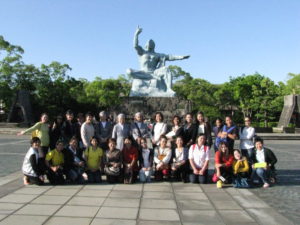 |
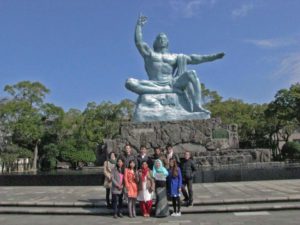 |
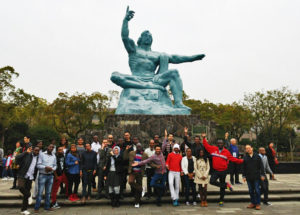 |
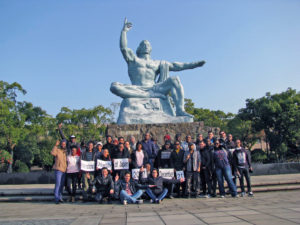 |
 |
 |
 |
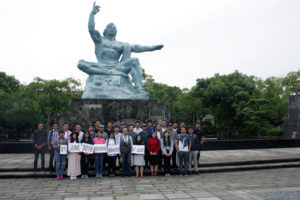 |
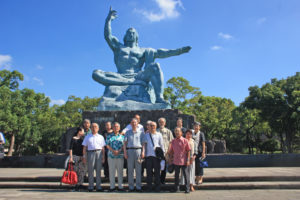 |
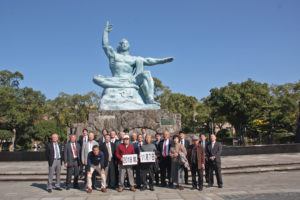 |
 |
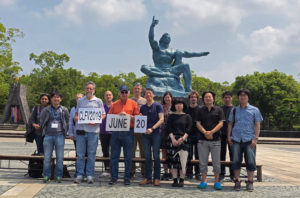 |
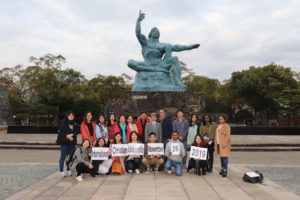 |
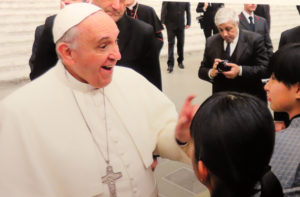 |
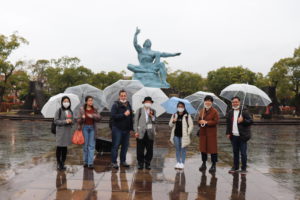 |
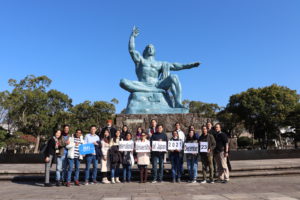 |
General information
| Address | Heiwakoen, Matsuyama-machi, Nagasaki-city |
| Access | 5 minutes walk from Heiwa-koen-shita Tram Station |

Home Tailor-made tours Study tours Christian Pilgrimage tours Golf tour Kyushu tour packages
China town
China town at shinchi is one of the big three china town in Japan. There are about
50 Chinese restaurants and many Chinese sundries shops in there.
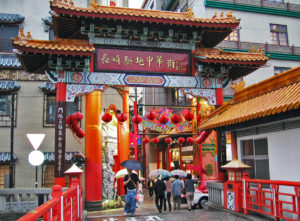 |
|
|
|
|
|
|
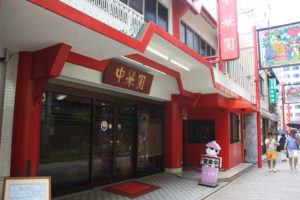 |
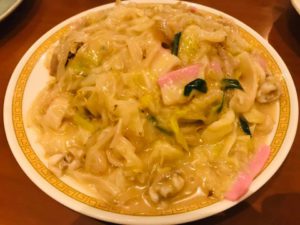 |
 |
An annual festival in Nagasaki held on Chinese new year. The festival has been started to
celebrate a new year by Chinese who lived in Nagasaki, and it became the Nagasaki’s festival
since 1994. More than 10 thousand lanterns are decorated at China town during the festival.
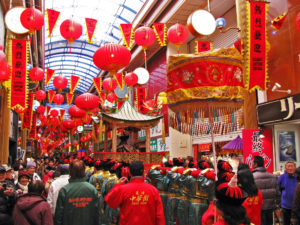 |
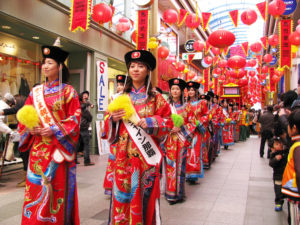 |
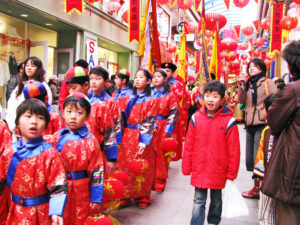 |
General information
Access : a short walk from Shinchi-chukagai Tram Station

Megane-bashi bridge
The oldest stone arch bridge in Japan. Meganebashi or Spectacles Bridge, over the Nakashima
River was built in Nagasaki in 1634 by the Chinese monk Mokusunyoujo who is a second
generation of Chinese monks living at Kofukuji Temple. It is said to be the oldest stone arch
bridge in Japan and has been designated as an Important Cultural Property.
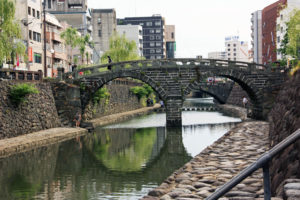 |
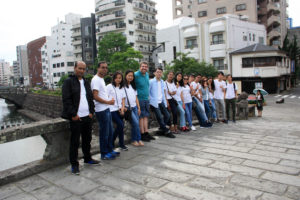 |
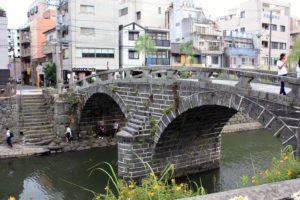 |
Megane Bridge is also part of the first group of bridges built over Nakashima River. Megane Bridge is
made of stone and is a double arch bridge. It received the nickname “Spectacles Bridge” because its
two arches and their reflection in the water create the image of a pair of spectacles.
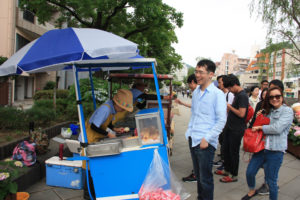 |
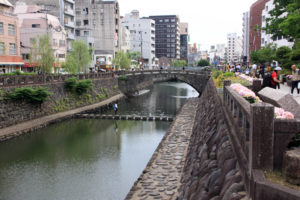 |
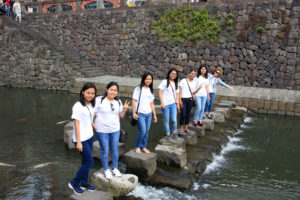 |
General information
| Address | Uonomachi, Nagasaki-city |
| Access |
3 minutes walk from Meganebashi Tram station |

Home Tailor-made tours Study tours Christian Pilgrimage tours Golf tour Kyushu tour packages
Kazagashira Park
Magnificent and panoramic view of Nagasaki-city. Kazagashira Park is located on the summit
of Kazagashira with 152 m high, and is on the other side of Inasa Mountain across Nagasaki
Harbour.
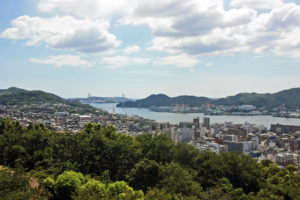 |
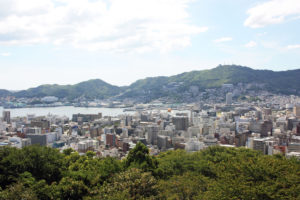 |
 |
At the observatory, there is the statue of Sakamoto Ryoma who greatly contributed
to overthrow the Tokugawa shogunate and make a new era.
 |
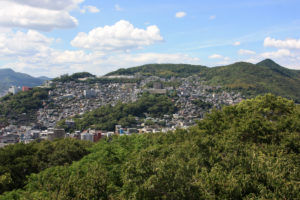 |
 |
General information
| Address | 3 Irabayashi, Kazagashira-cho, Nagasaki-city |
| Access |
15 minutes by a vehicle from JR Nagasaki station |

Home Tailor-made tours Study tours Christian Pilgrimage tours Golf tour Kyushu tour packages

